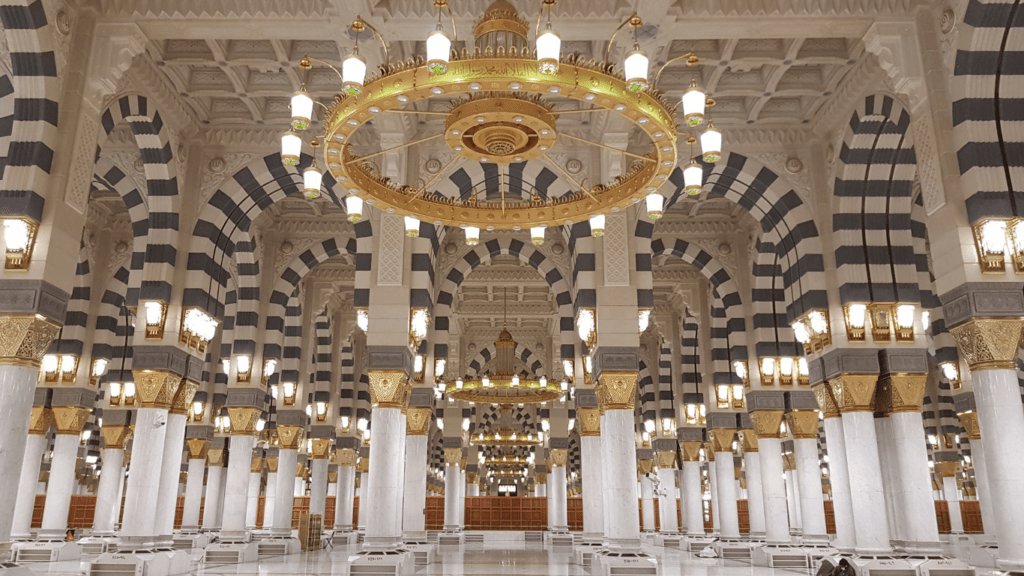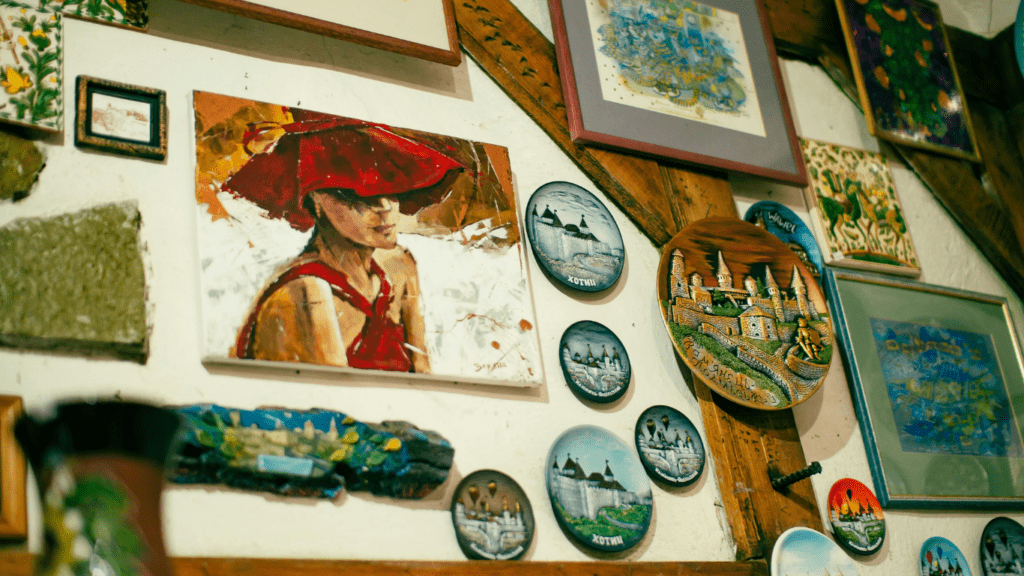The Comeback of Retro Art Styles: An Overview
Retro art styles draw inspiration from past decades, incorporating elements like bold colors, geometric shapes, and nostalgic patterns. These designs often reference the 1950s through the 1980s. Retro art brings a sense of familiarity and comfort, appealing to a wide audience who yearn for a touch of the past.
Key Elements of Retro Art
- Bold Colors
Artists use vibrant palettes reminiscent of pop art, with hues like bright red, electric blue, and vivid yellow. - Geometric Shapes
The use of sharp lines and geometric forms is prominent, creating a visually striking and memorable composition. - Nostalgic Patterns
Retro designs often feature iconic patterns like polka dots, stripes, and repeating motifs that evoke a specific era.
Fields Embracing Retro Art
- Fashion
Designers incorporate retro prints and styles in clothing, bringing back trends like bell-bottoms, tie-dye, and vintage logos. - Graphic Design
Retro art influences modern marketing, with brands using vintage-inspired logos, posters, and advertisements. - Interior Decor
Home decor sees a resurgence of mid-century modern furniture, vintage wallpapers, and retro color palettes.
- Mixed Media
Artists blend traditional retro elements with digital techniques, creating unique pieces that honor the past while embracing the future. - Minimalist Retro
Simplified versions of retro styles strip down the complexity, focusing on key elements to create a more modern and accessible aesthetic.
Retro art’s enduring appeal lies in its ability to connect generations through familiar visual language while staying relevant through modern adaptations.
Historical Context of Retro Art Styles
Retro art styles draw from previous decades like the 1950s through the 1980s. These styles offer familiarity and spark nostalgia through bold colors, geometric shapes, and iconic patterns.
Defining Retro Art
Retro art, an amalgamation of old and new, encapsulates specific aesthetics from past decades. It’s defined by vivid color palettes, dynamic shapes, and recurring motifs. Retro art evokes nostalgia, appealing to those who cherish bygone eras. Examples include polka dots, bell-bottoms, and vintage logos.
Major Movements and Artists
Several key movements and artists have shaped retro art through the years:
- Pop Art Movement: During the 1960s, artists like Andy Warhol and Roy Lichtenstein led the Pop Art movement. They used vibrant colors and commercial imagery, reflecting contemporary culture.
- Psychedelic Art: Emerging in the 1960s and 1970s, psychedelic art focused on surreal visuals and bold color schemes. Artists like Wes Wilson and Victor Moscoso became prominent figures, often designing concert posters.
- Art Deco: Originating in the 1920s and 1930s, Art Deco influenced later retro styles. This movement featured geometric shapes, lavish ornamentation, and luxurious materials. Artists like Tamara de Lempicka and designers like Erté epitomized this style.
- Mid-Century Modern: Spanning from the 1930s to the 1960s, this style emphasized clean lines, organic shapes, and minimal ornamentation. Designers like Charles and Ray Eames played significant roles in shaping Mid-Century Modern aesthetics.
Retro art, deeply rooted in these influential movements and artists, continues to inspire modern creators who blend traditional elements with contemporary techniques.
Why Retro Art Styles Are Resurging
Retro art styles are coming back strong, capturing the imagination of both creators and audiences. These styles blend the charm of the past with the flexibility of modern techniques, creating a unique visual language.
Influence of Social Media
Social media significantly boosts the resurgence of retro art styles. Platforms like Instagram and Pinterest help artists showcase their work to a global audience. Retro aesthetics often perform well on these platforms, attracting likes, shares, and comments.
Hashtags like #RetroArt and #VintageDesign help users find similar content easily, creating online communities around these styles. Social media algorithms, favoring visually distinct content, further amplify the reach of retro art.
Nostalgia and Cultural Renewal
Nostalgia drives the renewed interest in retro art styles. People seek comfort in familiar visuals from their past, and retro art delivers that nostalgia. This emotional connection leads to a cultural renewal, where old trends become relevant again.
Companies also tap into this sentiment by incorporating retro elements into branding and advertising, bridging generational gaps and appealing to a broad market. The use of nostalgic aesthetics creates a sense of timelessness, fostering both personal and collective memories.
This resurgence is noticeable across various media, including movies, fashion, and graphic design. For example, films and TV shows set in past decades often use retro art to enhance authenticity. Fashion brands reintroduce vintage trends, and graphic designers revive mid-century design principles. The cyclical nature of fashion and design ensures that retro styles will remain influential.
Impact on Modern Art and Design

Retro art isn’t just reminiscing about the past; it’s impacting contemporary creativity. Many modern artists and designers use retro elements to infuse their work with nostalgia and innovation.
Contemporary Artists Embracing Retro
Contemporary artists blend retro styles with modern techniques, creating a hybrid aesthetic. For instance, Shepard Fairey incorporates propaganda art styles from the mid-20th century into his pieces. Meanwhile, Hattie Stewart uses vibrant colors and playful patterns reminiscent of the 1980s. These artists show that retro influences can transform contemporary art into something both nostalgic and fresh.
Retro Elements In Modern Media
Modern media channels thrive on retro aesthetics. TV shows like “Stranger Things” and movies like “La La Land” integrate retro styles into their visual storytelling. Additionally, digital platforms such as Instagram and Pinterest highlight retro designs, making them accessible to a global audience. By blending old and new, these platforms help maintain the relevance of retro art in today’s digital age.
Challenges in Reviving Retro Art
Reviving retro art styles involves several challenges. Balancing authenticity and innovation, as well as addressing commercialization and consumer perception, represents significant hurdles.
Authenticity and Innovation
Maintaining the authenticity of retro art is crucial. Authentic retro art often requires a deep understanding of historical context, which can be difficult without extensive research. For instance, accurately replicating the vibrant palettes and geometric shapes from the 1970s demands knowledge of that decade’s design principles.
Innovating while preserving these authentic elements presents another layer of complexity. Artists blending traditional techniques with modern tools walk a fine line; too much innovation might overshadow the retro essence, while replication without innovation risks stagnation.
Commercialization and Consumer Perception
Commercializing retro art introduces challenges too. Retro trends can become oversaturated, leading to consumer fatigue. For instance, the overuse of vintage logos can make them seem clichéd instead of nostalgic.
Monitoring consumer perception is essential for staying relevant. Trends in fashion, graphic design, and interior decor often shift rapidly, influenced by social media and cultural changes. If retro art doesn’t evolve with consumer tastes, it risks losing appeal. Addressing these perceptual shifts demands continuous adaptation to keep retro styles fresh and engaging.


 Harriet Bellvovy, the visionary founder of Innov Art Foundry, has cultivated a platform that seamlessly bridges the traditional and modern aspects of the art world. Under her leadership, Innov Art Foundry has become a hub for the latest art news, keeping enthusiasts and professionals alike informed about significant exhibitions, breakthroughs, and emerging trends. Her commitment to fostering a vibrant art community is evident in the platform's comprehensive coverage, ensuring that artists and art lovers are always at the forefront of the dynamic landscape.
In addition to art news, Harriet Bellvovy has expanded Innov Art Foundry's focus to include art entrepreneurship, providing valuable insights for artists aspiring to turn their creative passions into thriving businesses. Her dedication to exploring diverse forms of artistic expression is further showcased in the platform's deep dive into tattoo art and the transformative role of virtual reality in the art world. Harriet's innovative approach continues to inspire and empower a new generation of artists, making Innov Art Foundry a vital resource in the contemporary art scene.
Harriet Bellvovy, the visionary founder of Innov Art Foundry, has cultivated a platform that seamlessly bridges the traditional and modern aspects of the art world. Under her leadership, Innov Art Foundry has become a hub for the latest art news, keeping enthusiasts and professionals alike informed about significant exhibitions, breakthroughs, and emerging trends. Her commitment to fostering a vibrant art community is evident in the platform's comprehensive coverage, ensuring that artists and art lovers are always at the forefront of the dynamic landscape.
In addition to art news, Harriet Bellvovy has expanded Innov Art Foundry's focus to include art entrepreneurship, providing valuable insights for artists aspiring to turn their creative passions into thriving businesses. Her dedication to exploring diverse forms of artistic expression is further showcased in the platform's deep dive into tattoo art and the transformative role of virtual reality in the art world. Harriet's innovative approach continues to inspire and empower a new generation of artists, making Innov Art Foundry a vital resource in the contemporary art scene.